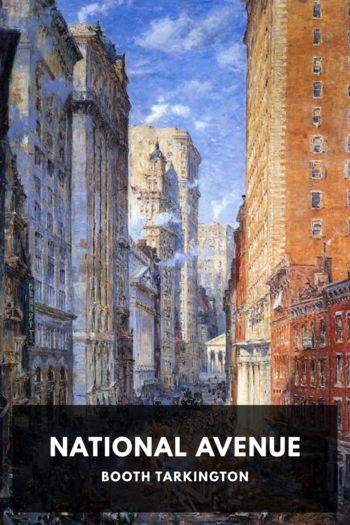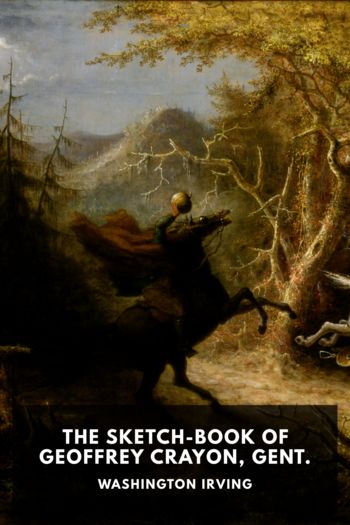Enchanted Evenings:The Broadway Musical from 'Show Boat' to Sondheim and Lloyd Webber Block, Geoffrey (large ebook reader .txt) 📖

Book online «Enchanted Evenings:The Broadway Musical from 'Show Boat' to Sondheim and Lloyd Webber Block, Geoffrey (large ebook reader .txt) 📖». Author Block, Geoffrey
For those unable to see the opera Porgy and Bess in their neighborhood, the Nunn film provides an innovatively filmed and well-sung opportunity to see and hear what the work has become to most audiences and recording aficionados since the late 1970s. It is a most welcome addition to the short list of filmed adaptations of Broadway classics before Oklahoma!
Pal Joey (1957)
By the time a Hollywood studio got around to making a film version of Pal Joey in 1957, the show had completed both its first run, begun in 1940, and its 1952 Broadway revival. The Rodgers and Hart era was long past, and the Rodgers and Hammerstein era was nearing its own finale with Flower Drum Song and The Sound of Music. However, film versions of Oklahoma!, Carousel, and The King and I had appeared within the past two years, the film version of South Pacific was only one year away, and it must have looked like a good time to mine the riches of Rodgers’s past achievements with his first lyricist.
The film adaptation of Pal Joey provided vivid proof that the makers of Broadway musicals could do more, show more, and say more onstage in the early 1940s than it was possible to do, show, and say on film in the late 1950s. Portraying behavior such as adultery was possible, but the Hollywood Production Code, which had expurgated Porter’s lyrics two decades earlier, had by now determined that a character engaging in such objectionable behavior would have to pay a clear price for such conduct. A musical based on two sleazy characters, Joey Evans and Vera Simpson, who use one another for sexual and financial gain, would not be permitted in a major motion picture in the United States for yet another decade—until the Code was finally cast off in the turbulent 1960s. It is also possible that the censorship was seconded by the projected onscreen Joey, Frank Sinatra, who may have recoiled from playing such a fundamentally foul character for fear of tarnishing his maturing public image, which was of concern to the broader Italian-American ethnic community as well. In the current era of media multiple choice, it may be hard to fathom the contradictory strictures in a social world with only one source of prestigious public audiovisual entertainment (Hollywood), and only three fledgling television networks still broadcasting only in black and white (CBS, NBC, and the upstart ABC).
Pal Joey, 1957 film. Joey Evans (Frank Sinatra) and Vera Simpson (Rita Hayworth) take the gloves off.
In any event, Vera, the flagrant adulteress in the stage version, is now a rich widower, and Joey, the heartless philanderer, at the end of the film marries the innocent Linda English instead of walking offstage to catch a fresh “mouse.” Linda, now a show girl infatuated with Joey instead of a stenographer he happens to meet in front of a pet shop, agrees to do a strip number, but in the end the uncharacteristically gallant Joey does not let her go through with it and does not take advantage of her sexually off-camera. Making Vera a former stripper sets up an opportunity to have her sing “Zip” to raise money for a charity. Onstage the song was delivered by the newspaper reporter Melba, who uses the song to describe her interview with the famous Gypsy Rose Lee, in which the surprisingly intellectual stripper shared her musings (including her considered opinion that the philosopher Schopenhauer was right) while zipping off her clothes. The seedy world of blackmailers, strippers, and other low-life characters is now replaced by likable show people and a likable ex-stripper socialite.
Placing Frank Sinatra in the title role removed the dancing component associated with the role first played by Gene Kelly and in the revival by Harold Lang. The non-singing and for the most part non-dancing Kim Novak played Linda English. Novak, then at the peak of her popularity—one year before she starred in Alfred Hitchcock’s Vertigo—and a major money earner for Columbia pictures, gained additional national exposure when she appeared on the July 29 cover of Time magazine shortly before the release of Pal Joey in September. Perhaps due to the star power of Sinatra and Novak, the film earned nearly five million dollars, one of the ten highest grossing films of the year.
Appealing to a slightly older film audience, the role of Vera Simpson was played by one of the most popular World War II pinups and the major Columbia pictures star of the 1940s, Rita Hayworth. Hayworth herself had been featured on both Time and Life covers in 1941, the latter in one of the most famous photographs of the era (her image even appeared on an atomic nuclear bomb dropped on Bikini Atoll shortly after World War II). In 1957, she was a mature but still beautiful woman at thirty-nine and appropriate in her new role as the older woman. “Zip” gave Hayworth the opportunity to sing a suggestive but refined strip number without taking off more than her gloves. Its referential gesture to her similar glove-strip in Gilda would be familiar to anyone who had seen both films.28 Unfortunately, Hayworth, the first of an





Comments (0)